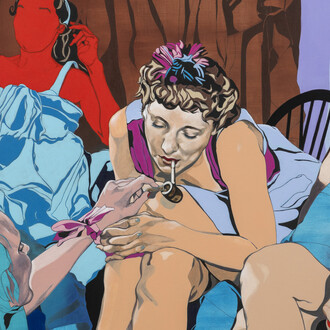Willem Sandberg (1897-1984) was director of the Stedelijk Museum in Amsterdam between 1945-63. Whilst he championed new artists and developed one of the most important collections of modern art in Europe, he also designed almost all of the posters, catalogues and graphic material for the museum – an unusual activity for a museum director. Sandberg’s graphic design reflected his vision and defined the look of the museum. With a focus on experimenting with type as image, his style was marked by simplicity, bright colors, torn paper shapes and the re-use of images in multiple contexts.
He designed 380 posters and more than 250 catalogues. After leaving the museum he stayed active as a graphic designer for a long time.
With the belief that art should be integrated into daily life, Sandberg introduced an education program and modernized the museum by transforming it into an inviting environment with a library, reading room, a restaurant and an auditorium with a film- and music program. Already in 1938 he whitewashed the interior of the museum and in 1954 he added an extension to the building. The year before he retired he replaced the solid wooden doors of the entrance into huge transparent glass doors. Sandberg constantly aimed to lower the threshold of the museum to make it more appealing and easy to access for everybody.
Under his directorship, the Stedelijk Museum began collecting not only important works by Van Gogh, Cézanne, Picasso, Léger, Mondrian, Moore, Calder and Malevich, but also other art forms including an international collection of design and photography. Most of all Sandberg exhibited artists from all over the world.
















